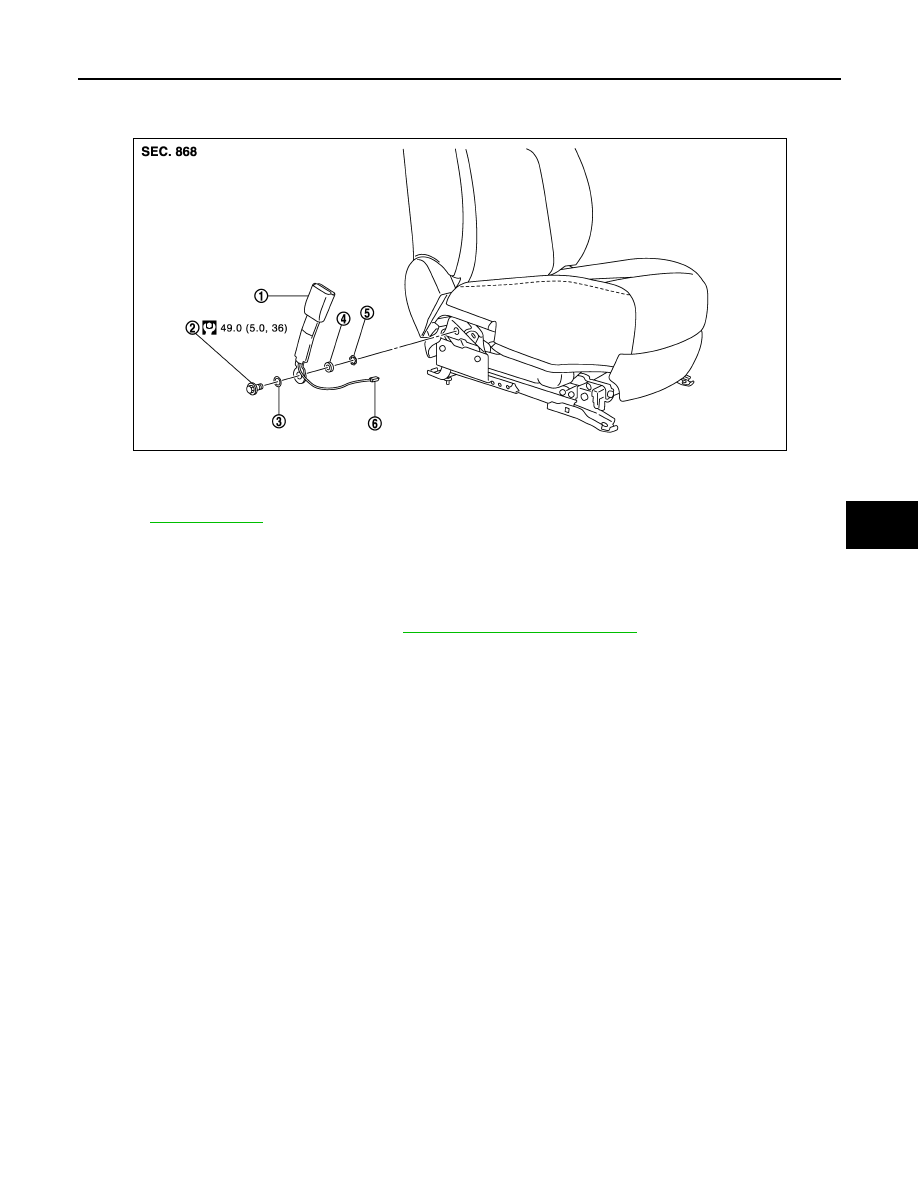Content .. 1244 1245 1246 1247 ..
Infiniti EX35. Manual - part 1246

FRONT SEAT BELT
SB-7
< ON-VEHICLE REPAIR >
C
D
E
F
G
I
J
K
L
M
A
B
SB
N
O
P
SEAT BELT BUCKLE : Exploded View
INFOID:0000000003514969
SEAT BELT BUCKLE : Removal and Installation
INFOID:0000000003514970
REMOVAL
Remove the seat belt buckle.
• Remove the front seat from vehicle. Refer to
SE-90, "Removal and Installation"
. (for ease of tool operation in
narrow space.)
• Remove the seat belt buckle harness connector and harness clamp.
• Remove the fixing anchor bolt of the seat belt buckle.
INSTALLATION
Installation in the reverse order of removal.
1.
Seat belt buckle
2.
Anchor bolt
3.
Wave washer
4.
Plain washer
5.
Retaining washer
6.
Seat belt buckle harness connector
Refer to
JMHIA0559GB